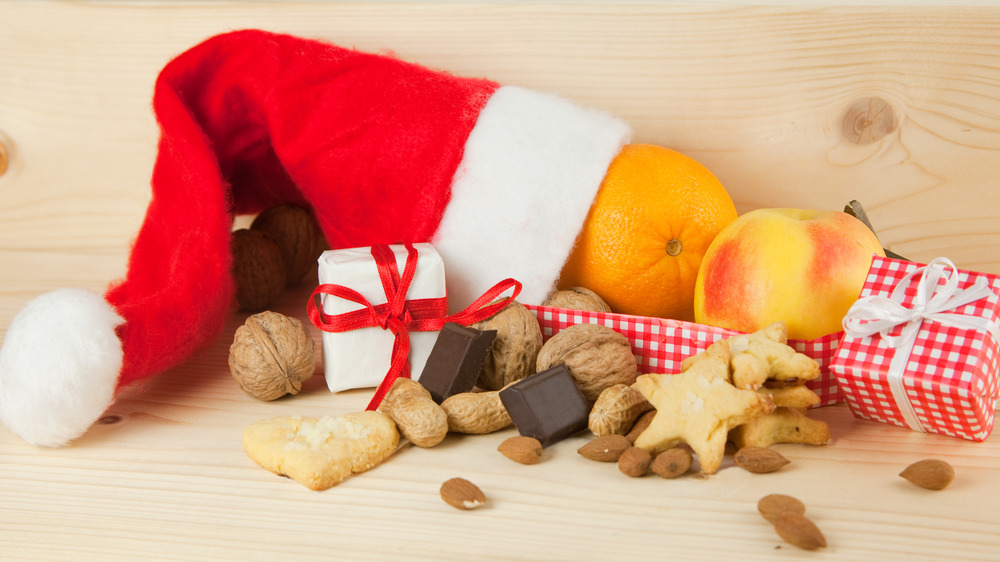The Real Reason We Get Oranges On Christmas
For many, Christmas really is the most wonderful time of the year. All those great smells from baking cookies, making eggnog, and perfecting your yule log not only fill the house with magical aromas, but also stir up nostalgic feelings of joy. Christmas is also a time for traditions, and one of our favorites is waking up on Christmas morning and finding an orange in our stocking, that had been hung by the chimney with care. But have you ever wondered why we receive oranges? Why not watermelons instead? Okay, fine, they're probably too big — but seriously, why an orange?
Turns out, there are a couple of theories suggesting where this tasty holiday tradition originated. The Kitchn notes that during the Great Depression there was no such thing as luxury gift giving, since many families didn't have any extra pennies to buy presents with in the first place. Oranges were given, as these sweet and juicy fruits were in and of themselves a small luxury available to some of those who grew up during this bleak economic time. Under the Solano Sun agrees, sharing that in the 1930s oranges were a scarcity and you would consider yourself lucky to receive one.
But there is another origin story for this holiday tradition that we love, and think may delight both young and old.
Oranges in your Christmas stocking may symbolize gold
The other story that helps explain the tradition of getting an orange in our stocking is rooted in the legend of St. Nicholas himself, and has all the beautiful story-telling elements we love to hear during the Christmas season. Per Smithsonian Magazine, the real St. Nicholas (who was also the Bishop of Myra) gave bags of gold to three poor young women so they would each have a dowry. This allowed them to wed, rather than sold into slavery. There is also an alternative telling of this story which sees St. Nicholas throwing the bags of gold through the window of the young women's home, where they landed in their stockings which had been hung by the fire to dry.
This story has been around for quite some time, and there's even a beautiful painting depicting the tale that can be seen in an altar piece painted by Gentile da Fabriano in 1425. Experts suggest this "Miracle of the Dowries" may have given way to the more affordable option for families of placing an orange in the toe of the stocking, while paying homage to St. Nicholas' kind acts. If you aren't buying this feel good story, The Kitchn also notes that the orange segments serve as a reminder that the holiday season is about giving and sharing. Regardless of the genesis of this favorite Christmas tradition, we think oranges are always a wonderful surprise.

